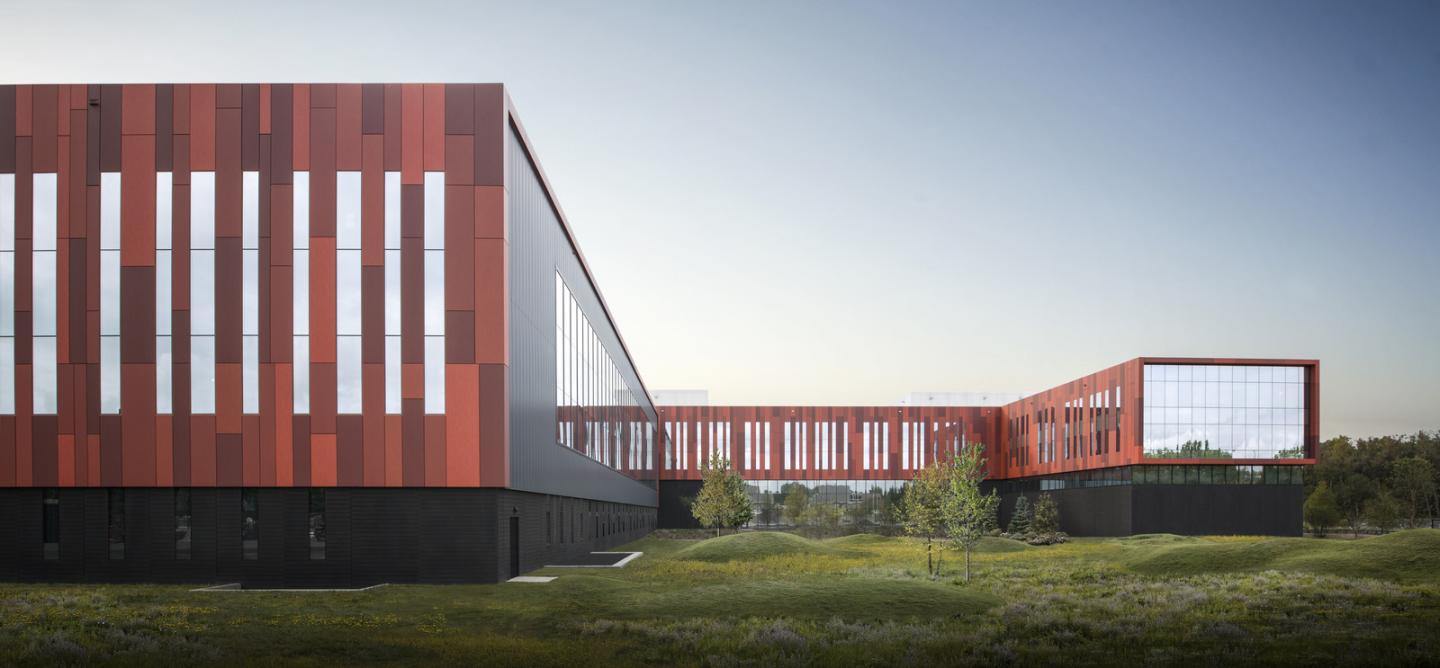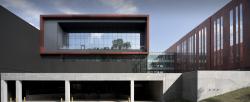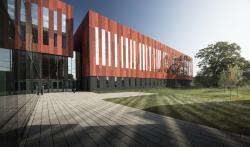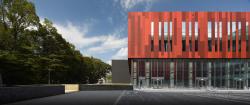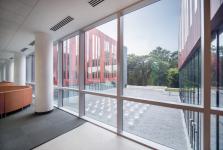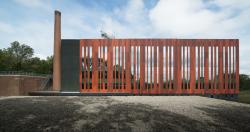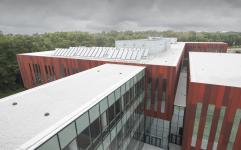After 9/11, U.S. intelligence agencies moved towards centralizing and improving communication and information-sharing. The Defense Intelligence Agency’s (DIA) enlisted LEO A DALY to reinvent the 725,000 SF Intelligence Community Campus–Bethesda (ICC-B) as the consolidated home of 16 intelligence agencies.
The project encompassed the design and construction of a new facility and the renovation of three existing buildings on the 1940s-era National Geospatial-Intelligence Agency (GIS) campus. Initial attempts to modernize the campus failed because the designs were too monolithic and did not meet the approval of the neighborhood’s advocacy groups.
Understanding these challenges, LEO A DALY designed a renovation that unites the campus aesthetically and programmatically. The three existing buildings were reskinned with a “natural camouflage” scheme, and all on-grade parking was returned to native habitat. Stitching together the fabric of the campus, a new Z-shaped Centrum building maneuvers around two existing buildings and connects to a third through a multi-level elevated bridge. Envisioned as an employee hub, the Centrum contains a main-entry lobby, fitness facility, auditorium, and several floors of secure operational functions.
The design was intended to increase communication and information-sharing, breaking down silos and making employees feel that they were not enclosed in a bunker. To this end, glass is located wherever possible to broadcast natural light into the workplace, while remaining blast-resistant. A dining terrace outside of the cafeteria overlooks a green roof, and a 14,000 square-foot plaza with linear concrete pavers promotes a space for colleagues to meet with each other.
Befitting the campus’s prominent place overlooking the Potomac River, a key goal of the design was to return the campus to harmony with nature. Nearly all on-grade parking was removed and returned to its native state, and the LEED-Silver certified Centrum building was upgraded to consume 31 percent less energy than a typical building of its size. Solar hot water arrays put the campus on a path towards achieving net-zero energy use. A 30,000 gallon cistern collects rainwater for reuse in the irrigation.
The design embraces the objectives of building a new modern facility within a historic, sensitive campus. The campus buildings are “mission critical” and are designed to be survivable with redundant power, cooling and IT systems. All renovations and upgrades met current safety codes and Americans with Disabilities Act (ADA) requirements.
“I believe this world-class facility is a beautiful addition to the community. . . . This facility is – in so many ways – the physical manifestation of ‘intelligence integration.’”
James Clapper, National Intelligence Director
2015
2017
